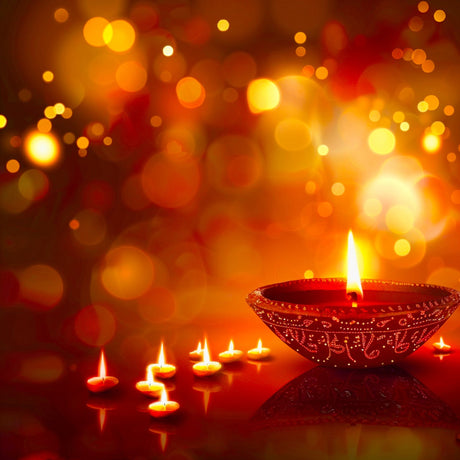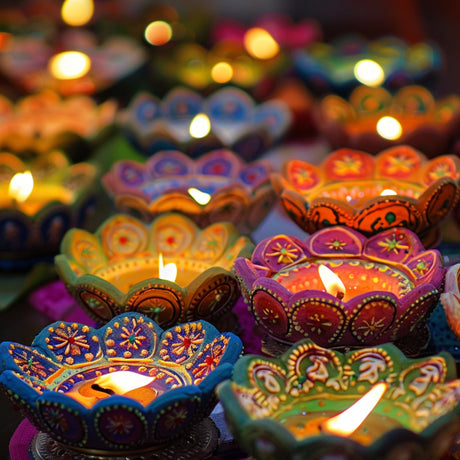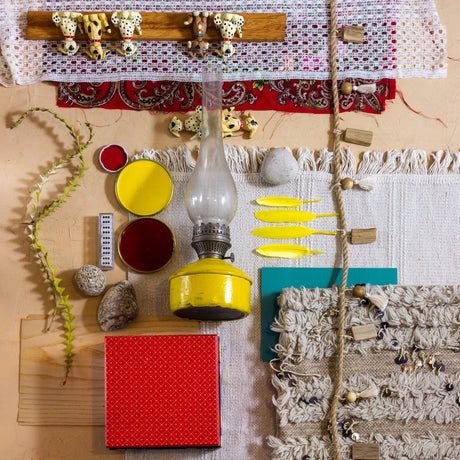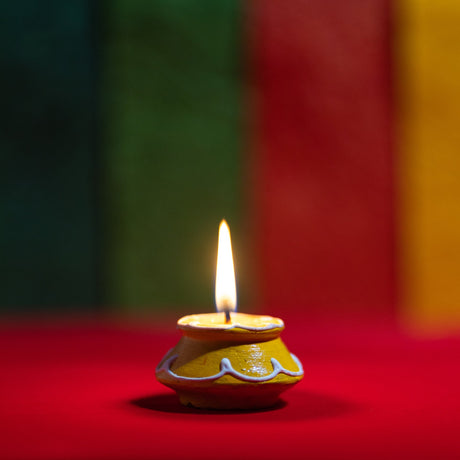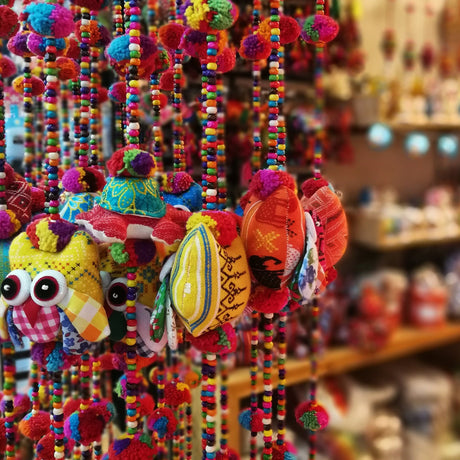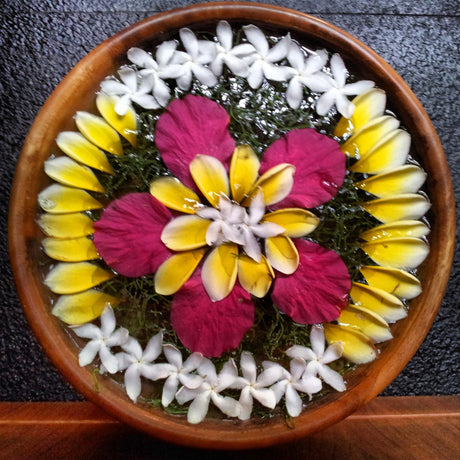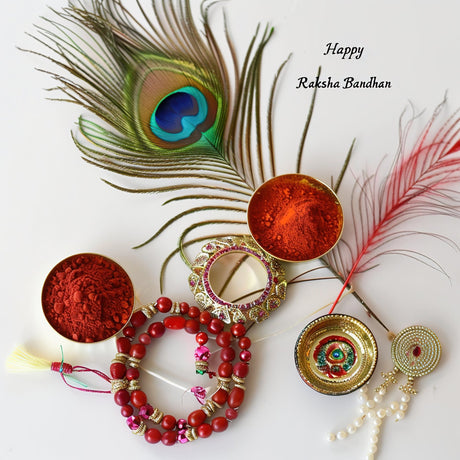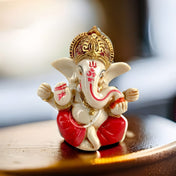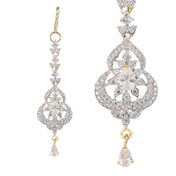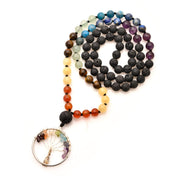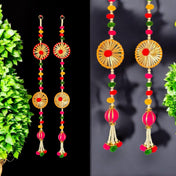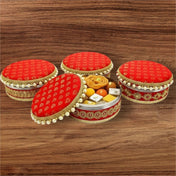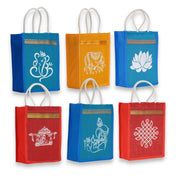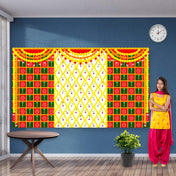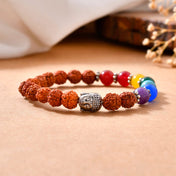Introduction
The word bindi comes from the Sanskrit term “bindu,” which means dot or point. This simple mark holds deep meaning in Indian tradition, representing much more than just a decorative element.
The Cultural and Spiritual Essence of the Bindi
Traditionally placed on the forehead, the bindi corresponds with the third eye chakra, also known as the ajna chakra—a powerful center of spiritual insight and wisdom.
Wear Bindi for Spiritual Symbolism
The ajna chakra represents intuition and higher consciousness, making the bindi a sacred emblem inviting focus and clarity.
Part of Social Significance and Traditional Indian Culture
Traditionally, bindis have conveyed marital status—red for married women—as well as honor, love, and prosperity within communities.
Bindi as a Fashion Statement and Cultural Diversity
Across India’s diverse regions, the style, color, and placement of bindis vary significantly, reflecting unique cultural expressions and local customs. For example:
- In Maharashtra, women may wear a crescent-shaped bindi called Chandrakor.
- In Bengal, married women often adorn a large red bindi known as Shankha.
- Tribal communities incorporate natural dyes and distinct patterns tied to their heritage.
The bindi’s essence goes beyond being just an accessory. It represents a complex web of beliefs that connects the wearer to their culture through visual symbolism—an everlasting link between spirituality and identity.
Explore more ways to celebrate this tradition in Beyond the Forehead: Creative and Unique Ways to Wear a Bindi. One such way is through the use of a Bindi Bag, an accessory that's not only stylish but also eco-friendly, created with a commitment to sustainable fashion.

Evolution of Bindi Materials and Designs for Indian Women
The materials and designs used in bindis have evolved over time, reflecting changes in culture, fashion, and personal expression. This evolution can be seen in the transition from traditional bindis made with natural materials to the modern varieties that incorporate a wide range of materials and designs.
Traditional Bindi Transition from Natural to Modern Materials
Traditionally, bindis were made using natural materials such as turmeric (for its vibrant yellow color) and vermilion powder (for its bright red hue). These powders were applied directly onto the forehead as a form of adornment and symbol of marital status.
However, with the advent of modernity and convenience, there has been a shift towards using synthetic materials for bindi production. Today, self-adhesive felt is commonly used as it provides ease of application without the need for any additional adhesives. Additionally, metal designs have also gained popularity due to their durability and ability to create intricate patterns.
Bindi Trends and Emergence of Decorative Motifs
As bindi designs evolved, so did the motifs used in their decoration. While traditional bindis were often simple in design, modern varieties have embraced a wide array of decorative elements.
Decorative motifs such as jewels, swirls, and crescent shapes are now commonly seen on designer bindis. These embellishments not only add visual interest but also allow individuals to express their personality and style through this traditional accessory.
How Bindi Signifies the Influence of Contemporary Fashion Trends?
The world of fashion is constantly evolving, and it comes as no surprise that contemporary fashion trends have had an impact on bindi varieties as well. Designers are now incorporating bindi-inspired elements into their collections, further blurring the lines between traditional and modern aesthetics.
For example, we may see runway shows featuring models wearing bold statement bindis paired with avant-garde outfits or street style influencers sporting colorful geometric bindis alongside casual wear. Such influences contribute to the diversification of bindi styles available today.
A Fashion Accessary and Expansion of Aesthetic Possibilities through Designer Bindis
In recent years, there has been a rise in popularity for designer bindis created by independent artists or brands. These unique pieces go beyond conventional designs and offer fresh perspectives on this age-old accessory.
Designer bindis often experiment with unconventional shapes (such as triangles or hexagons), vibrant color palettes (like neon hues), or mixed media approaches (combining fabric with beads). By pushing boundaries creatively, these designers are expanding the aesthetic possibilities associated with wearing a bindi.
This evolution signifies not only an appreciation for tradition but also an embrace of individuality within cultural practices.
Bindi on My Forehead: Creative and Unique Ways to Wear a Bindi Beyond

Bindi as Facial Art Fashion Accessory – Around Eyes and Cheeks
The traditional placement of the bindi centered on the forehead has inspired countless creative bindi styles that venture beyond this classic spot. One of the most striking trends in artistic face decoration involves positioning smaller or patterned bindis around the eyes and on the cheeks. This unconventional bindi placement not only accentuates natural facial contours but also transforms the face into a canvas of cultural expression fused with fashion innovation.
Facial adornment with bindis around the eyes can create symmetry and highlight features such as eye shape, cheekbones, and brow arches. Intricate arrangements of tiny bindis or motifs like swirls, dots, and geometric shapes add an ornamental charm that balances traditional symbolism with contemporary aesthetics. Cheek placements often complement makeup styles, turning each application into a personalized statement of identity.
This style finds vibrant representation in global fashion shows where designers experiment with ethnic elements to create runway looks that celebrate heritage in fresh ways. Celebrities have embraced these artistic face decorations during red carpet events and music festivals, inspiring wider audiences to explore beyond customary applications. Their bold choices illustrate how spiritual symbolism inherent to bindis can coexist beautifully with personal style and modern trends.
The practice carries deeper significance by blending ancient cultural roots—the third eye’s wisdom—with self-expression through body art. It invites wearers to embody both mindfulness and creativity, inviting curiosity about Indian traditions while encouraging new interpretations.
Here are some examples of creative ways to wear a bindi around the eyes and cheeks:
- Small jewel-studded bindis delicately arranged above eyebrows evoke celestial motifs
- Patterned clusters along cheekbones mimic traditional rangoli designs in miniature form
- Use of metallic or iridescent finishes reflects evolving material innovations seen in designer bindis
Beyond the forehead: creative and unique ways to wear a bindi push boundaries while honoring a rich cultural heritage, revealing endless possibilities for those seeking to celebrate tradition with an individualistic twist.
Body Bindis for Indian Girls – Collarbone and Neckline Accents
Exploring creative bindi styles beyond the forehead opens up exciting avenues for body bindi art and unique body decoration. Placing decorative bindis along the collarbones or tracing the neckline offers a fresh canvas for artistic face decoration, transforming traditional symbolism into fashion innovation with bindis. These placements become striking statement jewelry pieces that beautifully complement contemporary outfits.
- Ideal for special occasions or festive celebrations, collarbone and neckline bindis add an elegant yet unconventional flair.
- Pairing such body bindis with ethnic jewelry—like layered necklaces or statement earrings—creates a harmonious and culturally rich aesthetic.
- This approach blends heritage with modern fashion sensibilities, crafting new cultural narratives that honor tradition while embracing artistic freedom.
The fusion of facial adornment with bindis and body accents invites wearers to express individuality through unconventional bindi placement, reinforcing the bindi’s evolving role as both spiritual symbol and trendsetting accessory.
Applying a Bindi on Hand and Wrist – Extending Tradition to New Canvases
The bindi, traditionally worn on the forehead, has evolved into a versatile accessory that can be creatively styled beyond its conventional placement. This evolution reflects the ever-changing nature of fashion and the influence of cultural diversity on contemporary trends. Today, we explore the world of hand and wrist bindis—an innovative extension of this ancient tradition.
1. Choosing the Perfect Bindi Adornments for Hands and Wrists
One of the most exciting developments in bindi fashion is its application as an adornment for hands and wrists. Small decorative bindis are now being used as part of bridal or festival styling, adding an extra touch of elegance to these special occasions. Whether it's a delicate floral design or a geometric pattern, these intricate adornments draw attention to the hands and wrists, making them an integral part of the overall look.
"The beauty of using bindis on hands and wrists is that they can be easily customized to match any outfit or theme," says fashion stylist Priya Sharma. "It's a great way to express individuality while still embracing cultural elements."
2. Fusion of Henna Art with Bindi Embellishments beyond Spiritual Practice
Another fascinating trend emerging from this fusion is the combination of henna art with bindi embellishments. Henna, known for its intricate designs painted on the skin, has long been associated with celebrations and rituals in many cultures. By incorporating bindis into henna designs, artists are able to create a unique form of body art that tells a story—a celebration of heritage intertwined with personal expression.
This blending of two traditional practices not only enhances cultural expression but also opens up new avenues for creativity within the realm of body decoration.
3. Handcrafted Bindi Designs: A Nod to Artistry Unlike Classic Red Bindi
In addition to these trends, we also see an increasing number of handcrafted bindi designs making their way into mainstream fashion. Artisans skilled in various crafts such as beadwork or embroidery are infusing their artistry into bindi creations—transforming them into statement pieces that can be worn on any part of the body.
These handcrafted designs serve as reminders that fashion need not always be mass-produced; it can also be an avenue for supporting local artisans and preserving traditional crafts.
As we continue exploring ways in which bindis are being reimagined as artistic face decorations, it becomes clear that this age-old symbol holds immense potential for creative expression across cultures.
Designer Bindis by LoveNspire: Where Fashion Meets Tradition
LoveNspire designer bindis redefine the age-old tradition of adornment by merging handmade ethnic products with contemporary artistry. Each bindi is crafted with meticulous attention to detail, reflecting a rich cultural heritage while embracing modern aesthetics. This transformation turns a simple red dot into wearable art that resonates across generations and geographies.

What Makes LoveNspire Different?
Key elements that set us apart include:
- Authenticity rooted in traditional techniques handed down through artisans devoted to preserving Indian cultural expressions.
- Use of premium quality materials such as fine felt, crystals, semi-precious stones, and eco-friendly adhesives ensuring comfort and durability.
- A broad range of personalized gift ideas allowing customers to select designs that speak to individual style, occasion, or spiritual significance.
Significance of a Bindi: More Than Just Forehead Adornments
The collection extends beyond the forehead, celebrating the concept highlighted in Beyond the Forehead: Creative and Unique Ways to Wear a Bindi. Innovative shapes, intricate motifs, and unconventional placements invite wearers to explore new dimensions of self-expression while honoring ancestral roots.
LoveNspire’s approach honors craftsmanship as a living dialogue between past traditions and current fashion trends, fostering a global appreciation for Indian cultural artistry through every carefully designed bindi.

The Role of Bindis Worn by Women in Bridging Cultures Globally
The Indian bindi has transcended its traditional roots to become a vibrant emblem of identity within the global Indian diaspora. Across continents, it is worn not only as a spiritual or marital symbol but as a proud expression of cultural heritage and personal style. This adoption reflects a rich cultural exchange through bindis, where the red dot evolves into a versatile motif connecting generations and geographies.
In Western fashion scenes, the bindi’s presence sparks important conversations around ethical use of cultural symbols. Distinguishing respectful adoption from cultural appropriation requires awareness of the bindi’s deep significance. When embraced with knowledge and reverence, the Indian bindi enriches cross-cultural dialogue rather than dilutes cultural meaning.
LoveNspire champions this responsible celebration by promoting authentic education alongside quality products. Their curated collections emphasize the artistry and stories behind each design, empowering wearers to honor tradition while exploring contemporary fashion expressions. This approach nurtures global appreciation that respects origins and fosters genuine connection.
- Indian diaspora fashion embraces bindis as statements of pride beyond religious boundaries
- Ethical frameworks guide how bindis are incorporated respectfully into global style
- Our mission centers on bridging cultures with authenticity and passion through the Indian bindi
The growing visibility of bindis worldwide highlights their unique role as symbols that unite diverse communities through shared appreciation and meaningful cultural exchange. We offer a variety of fancy bindi favor bridal shower favors, marathi bindi favor moon bridal shower favors, and simple bindi favor bridal shower favors which are great examples of how bindis can be integrated into various aspects of life, including weddings, thus further bridging cultural gaps. Their bindi collection also showcases the versatility and beauty of this cultural symbol.
LoveNspire Guides about the Health & Social Dimensions of Bindi Usage
Bindis are more than just decorative items in India; they serve as social markers within various communities. The color and style of a bindi can convey significant social signals, such as marital status or mourning.
In addition to their social significance, bindis also hold health benefits. For instance, some women in certain parts of India use iodine patch bindis to combat deficiencies.
We are at the forefront of providing extensive bindi solutions that cater to both the aesthetic and health needs of its customers.
Conclusion
LoveNspire remains dedicated to enriching lives by blending tradition with modernity through culturally authentic products. Readers are encouraged to explore their own unique expressions while honoring the deep heritage behind the red dot named bindi. With the future of bindi fashion emphasizing cultural heritage preservation and innovative ethnic accessories, We continue to pave the way for creative and unique ways to wear a bindi beyond the forehead.

